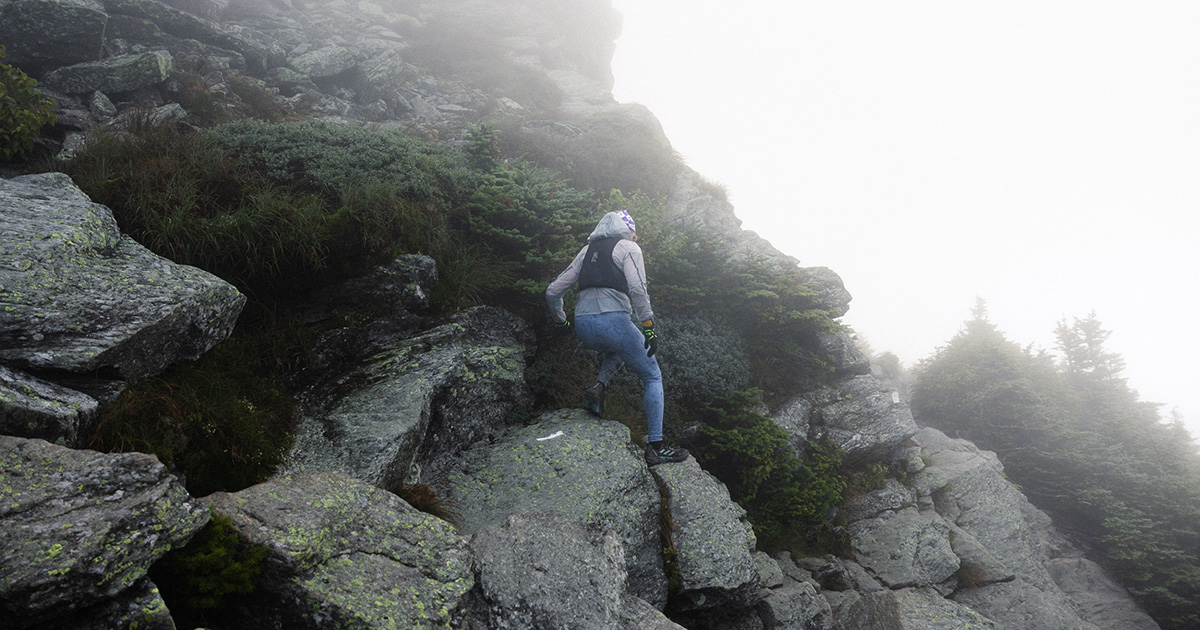Overtraining in running and how to train smarter
 Photo from Vermont’s Long Trail, where smart planning goes a long way, thanks to relentless terrain and serious vert
Photo from Vermont’s Long Trail, where smart planning goes a long way, thanks to relentless terrain and serious vert
Most runners have brushed up against it, some of us have barreled straight through it. Overtraining. It’s that sneaky state where too much running, not enough recovery, and a lack of planning collide into a perfect storm of fatigue, plateaued performance, and sometimes even injury.
It’s easy to fall into this trap, especially as a newer runner when every group run feels like an exciting new adventure. You show up, run faster than usual because it’s fun pushing the pace with friends, and before you know it, your performance is not where you want it despite all the miles. If FOMO is driving your training, that’s not a training plan. It’s the road to burnout.
The Signs of Overtraining
Let’s start with the symptoms. According to the training experts at Uphill Athlete, signs of overtraining can be grouped into two categories: primary and secondary symptoms.
Primary symptoms include:
- Decline in performance
- Persistent fatigue
Secondary symptoms may involve:
- Muscle soreness or tenderness
- Mood swings
- Feelings of depression, anxiety, or irritability
- A weakened immune system
- Low motivation
But overtraining isn’t just about doing too much, it’s often a result of not recovering enough (Carter, 2023). You’re not just overloading your body; you’re under-supporting your recovery.
One way to keep tabs on this is by monitoring your heart rate. With consistent training and adequate recovery, your resting heart rate should decrease over time. If you’re noticing a consistently elevated heart rate along with any of the symptoms above, it’s a clear signal to scale back and prioritize rest (Carter, 2023).
Train Smarter, Not Just Harder
The American Trail Running Association notes that “most elite athletes run about 80% of their training at easy efforts and only 20% at relatively harder efforts” (Pollmann, 2021). It’s all about how you distribute your training load throughout the week to encourage smarter adaptations and avoid excessive fatigue. Hard workouts should be used with intention—not as a default—and experimenting with different training schedules can help you discover what best supports your fitness and race-day goals (Carter, 2023).
A key part of this strategy is understanding your terrain. Whether you’re prepping for a flat road marathon or a technical mountain ultra, route planning plays a big role in managing intensity. A 15-mile run with 4,000 feet of vert at altitude puts a very different strain on your body than 15 flat miles at sea level. Matching your effort to the terrain helps prevent overreaching and ensures your training stays aligned with your goals.
That’s where tools like the Footpath are valuable. With Footpath, you can visualize and measure routes before you lace up, getting a clear picture of distance, elevation gain, terrain type, and time estimates. It’s a simple way to avoid those “surprise 3,000 feet of vert” situations which are great for storytelling but might be counterproductive to what you’re building toward.
As Alyssa Clark, coach and professional trail runner, puts it:
Mapping out routes helps avoid surprises or overreaching in training. Especially when it comes to trails, a 10-mile route one place can be significantly different from another with differences in altitude, ascent and descent and terrain. Knowing where you’re going helps best prepare you for the demands of the run and keeps you safe, happy and healthy.
Getting even more specific, Footpath athlete Graham Blanks tailors his routes to match each day’s training goals. For long runs, he uses the app to find long smooth stretches of dirt road, while for tempo sessions, he maps out shorter, measured loops to get clear split feedback from his effort. “Taking the time to plan ahead using Footpath truly makes these runs much more pleasant, removing the stress of navigation and knowing what’s ahead,” explains Graham.
Final Thoughts: Rest Is Training, Too
It’s easy to get caught up in mileage comparison or feel like every day needs to be hard to be effective. But resilience isn’t built in one big effort, it’s built over months of balanced, deliberate training and plenty of rest.
So download Footpath, map your route, plan your recovery, and remember: more isn’t always better. Smarter is.
References:
Carter, M. (2023, June 25). Symptoms of overtraining in mountain athletes. Uphill Athlete. https://uphillathlete.com/recovery/overtraining-symptoms-in-mountain-athletes/
Pollmann, T. (2021, February 3). Hey trail runners, take it easy! American Trail Running Association. https://trailrunner.com/trail-news/hey-trail-runners-take-it-easy/